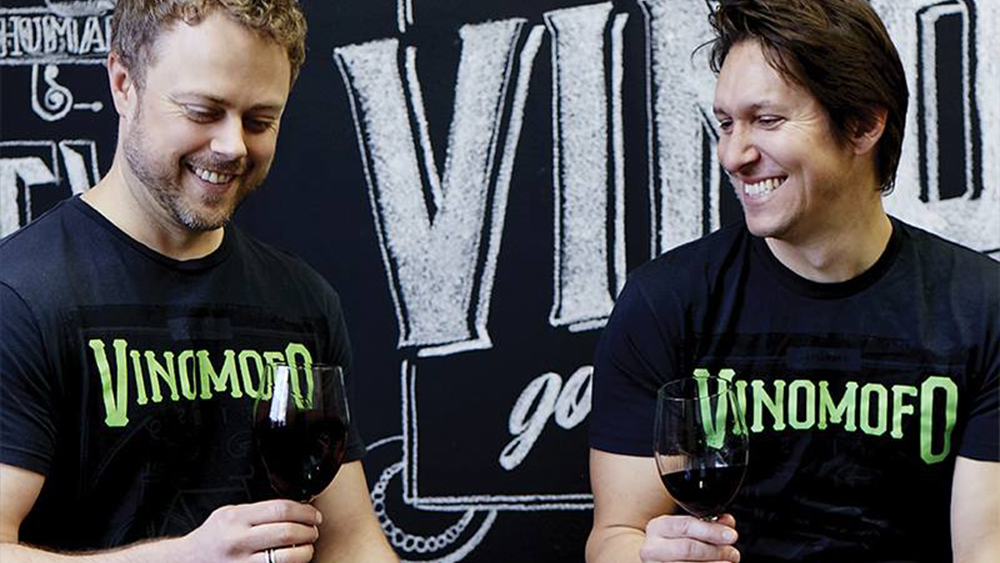Running a local small business is great, but being able to take your idea global is what many entrepreneurs today aspire towards. And, thanks to technology that connects people from around the world and makes it a snap to complete financial transactions, international business isn’t just for big corporations anymore.
Take Vinomofo as an example. Even though this business was started in a garage in 2011, it has grown to become Australia’s largest pure play online wine retailer, effectively disrupting the Australian wine industry. Their member base has grown to more than half a million people, and they’ve been able to expand into New Zealand and Singapore, with no signs of stopping anytime soon. Very impressive!
How did Vinomofo attain such incredible global growth—a goal that online business owners dream of achieving for themselves? We caught up with co-founder Justin Dry to talk about his strategies for building an international tribe of loyal customers, who are endearingly referred to as “mofos” (clever, right?).

Connecting wine producers with young wine enthusiasts
Before launching Vinomofo, Justin had a couple of other businesses within the wine niche. To help young people connect with great wine, Justin and his partner Andre Eikmeier created a social community known as Qwoff. They reviewed wines, discussed all things wine, went to events, and built a community of around 30 thousand people. After Qwoff, their next venture was the Road to Vino YouTube show, which helped the duo build up their network of wine producers.
In the meantime, the wine industry and community on a whole were also changing; “When we first started, the industry didn’t know how to speak to the younger generation, and they also didn’t really understand the power of the consumer voice. It has changed a lot over the years. The industry has opened up and is far more welcoming to the audience, which I think is an amazing thing. There are so many interesting producers and winemakers doing things differently today. There’s a desire to think differently and leave an impression on the world, which leads to a really diverse and fascinating space. And I’m super excited to see it all happening.”
Today, Vinomofo works with both innovative up-and-comers, as well as established names, in the winemaking industry.
“We’re championing good wine, and good wine comes from many different places. There are still some large-scale producers that make fantastic, incredibly interesting wine. It’s not about being small or large, or an individual versus a business, it’s about what they are producing. It’s about finding those wonderful wines we love.”
Good wine and great friends—we can all get behind that!

Going global the Vinomofo way
With the help of customer referrals and personalised touches to their customer service approach, Vinomofo started selling more and more wine.
Beyond doing things like handwriting holiday cards and sending small gifts to their first thousand customers, who received the title Founding Members (now that would make anyone feel important!), Justin embraced technology to connect with a global audience.
“One of the big advantages we’ve had is that we have been really early to get on all the platforms. Whatever was new at the time, whether it was Facebook or Snapchat, we were testing them out early. When a new platform launches, there’s a time before the big players get involved. Facebook was, in its early days, a very efficient way to reach new potential customers, and the spend that was required to get in front of the right people was a lot lower than it is today. The standard practice is to wait to see how things are working, and then wait a little more, and then jump on the bandwagon. But there is a real advantage to being a first mover.”
It wasn’t always smooth sailing, though. Like any burgeoning business, Vinomofo had its own set of challenges to overcome.
“The first thing is getting the focus right. Entering into a new market is a big commitment and not something you do on the side. There is every chance that you’ll spread yourself too thin, especially since we launch into new markets with a ground up approach. It’s easy to underplay the amount of energy, time, and resources it takes to pull off a successful expansion. You need to be aware of what resources you’re going to be draining from the main team, as you don’t want to spread your resources so thin that the value proposition and experience takes a hit in the markets that are already operating.”

Beyond focus, Justin recommends researching a new market so you’ll know what to expect, as well as how to cater to the consumers within a market that’s foreign to you.
“The other thing is understanding the differences within each market. What we have experienced in Australia compared to New Zealand and Singapore, and what we’re about to experience in the U.S., in terms of culture, language, the way they do business, the consumer buying patterns, the types of wines they’re interested in—all those things are very different in each market. We learned a lot from launching in New Zealand, which was our first overseas market. We overestimated how much we knew about the market, and our New Zealand operation has now evolved into something very different to what we originally thought it would look like.”
“When we launched in Singapore, we had learned our lesson and knew more about what we needed to know before launching. And, because of that, the market has gone remarkably well from a much earlier point. The lesson has been that you need to spend a lot of time in the market, getting to know the community and network around your space. Or, hire someone who knows that market really well. So you either hire someone with that expertise or you learn it yourself.”
“When we first started, the industry didn’t know how to speak to the younger generation.”
Vinomofo created a more open and inclusive wine community.

Vinomofo’s tips for choosing new markets
Knowing what markets your business will do best in is the key to your global expansion. Justin recommends checking out how big a particular market is before diving in. Beyond that, he attributes checking the current structure of a market to Vinomofo’s success.
“When we were looking at our first Asian market, we were looking at Hong Kong versus Singapore. I was spending time in both markets and I was looking at the competition, the distribution chain, and structure (who sold to whom, and where they got those wines from). Is there an importer, are there exporters, wholesalers, distributors? How many hands were involved in the chain?”
Looking at what similar businesses are up to in an overseas market is one thing, but you also need to consider the customer base that resides there as well.
“There’s a lot of complexity involved in comparing two markets. Why we decided on Singapore came down to: the size of the market was competitive compared to Hong Kong. We were looking at the expat communities, and drilling it down to English speaking expats in those markets. Hong Kong is considered to be a massive wine market, but when looking at English speaking expats that are drinking wine locally, that community was about three to four times as big in Singapore.”

For Vinomofo, targeting expats, who make up 40-50% of their audience in any market, has played a pivotal role in the company’s success abroad. Initially, it’s the expats who start buying, and then they spread the message about Vinomofo’s offerings.
Another way that Vinomofo has been able to stand out against the competition and really connect with customers is by removing the middleman.
“Originally, in Australia, we disrupted the industry by removing the middlemen. In Singapore, there were still layers and layers of middlemen; it had exporters, importers, distributors, and retailers.
“We go directly to producers, pick the wine we want, and buy more of that wine than anyone else is going to. So, between that French producer and the consumer in Singapore, it’s only us. We manage the entire flow between the producers and consumers, so all those margins are removed and the savings are passed on to our members. And that’s why we win on price: we have no layers and our buying is very focused. We’re not all things to everyone; we are very focused.”

Managing international currencies like pros with the help of OFX
With Australia, New Zealand, Singapore, and an upcoming expansion into the United States, Vinomofo is no stranger to juggling foreign currencies and dealing with currency conversion from overseas purchases and sales. For a lot of entrepreneurs, this alone could be one of the biggest challenges of doing business abroad.
When it comes to large orders of imported wines that are price sensitive, Vinomofo works with OFX to lock in Forward Exchange Contracts (which allow you to lock in today’s exchange rate for up to 12 months). Doing so helps them cost and price their imported wines even before they land.
When the company started receiving multiple currencies after they launched in New Zealand and Singapore, Vinomofo established separate bank accounts in each currency (i.e. NZD and SGD). And OFX has also been able to help because receiving overseas payments is a breeze, with lower fees and rates than what banks have to offer.

Global growth conquered, and ready for more!
Vinomofo isn’t showing any signs of slowing down. And Justin plans to keep diving deep into other markets and cultures to bring Vinomofo to more people around the world.
“We’re launching in the U.S. this year so I’m going to move there and build it from scratch. I want to live and breathe it; I want to get to know our foundation mofos there.”
A truly inspiring story, and one that we’ll be happy to continue following!
IMPORTANT: The contents of this blog do not constitute financial advice and are provided for general information purposes only without taking into account the investment objectives, financial situation and particular needs of any particular person. OzForex Limited (trading as OFX) and its affiliated entities make no recommendation as to the merits of any financial strategy or product referred to in the blog. OFX makes no warranty, express or implied, concerning the suitability, completeness, quality or exactness of the information and models provided in this blog.


